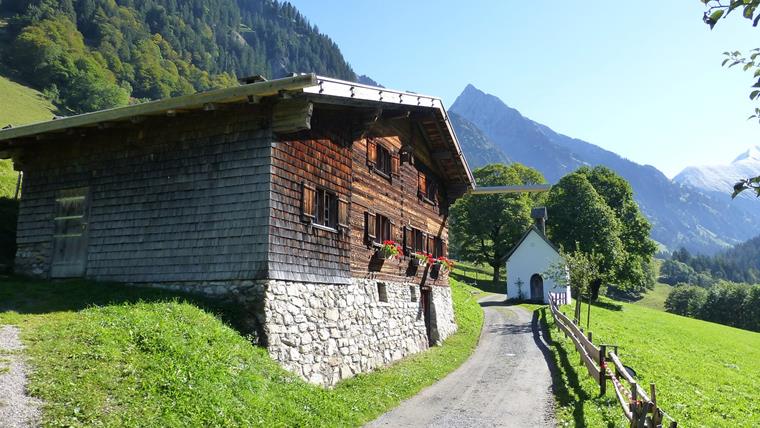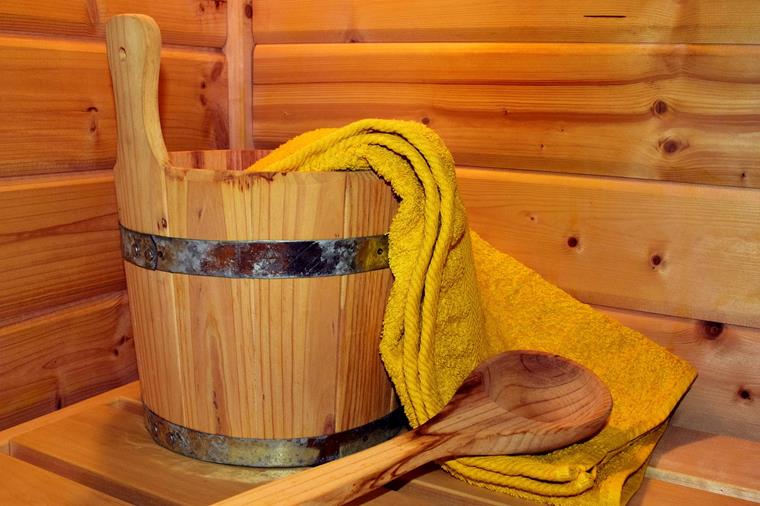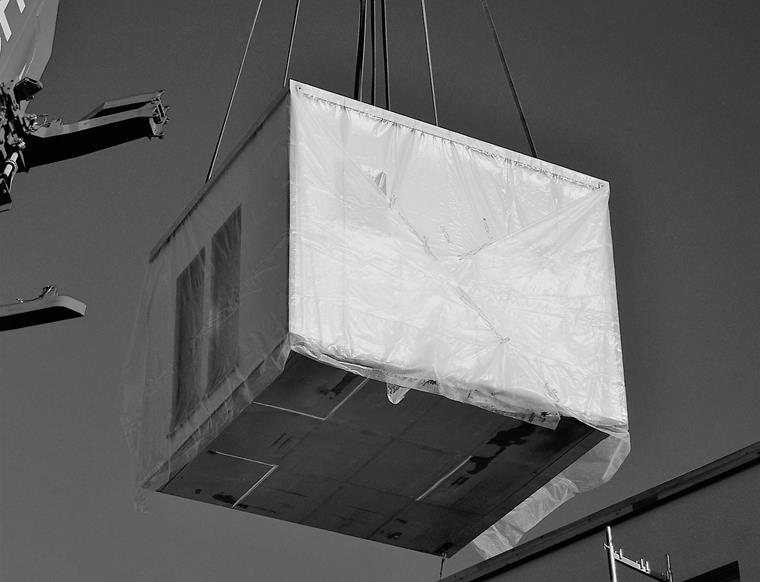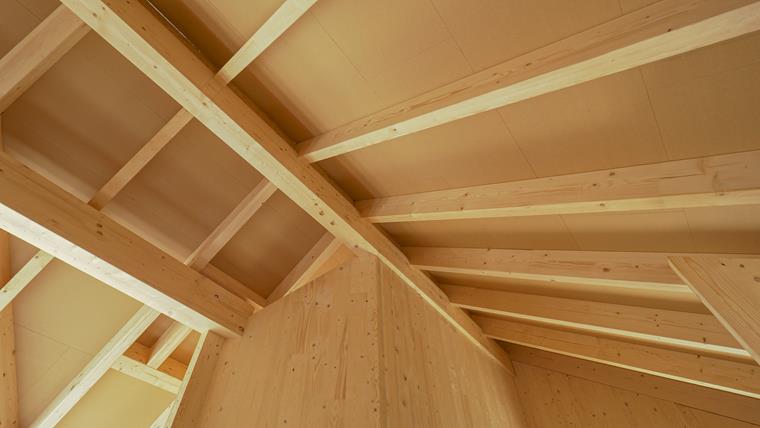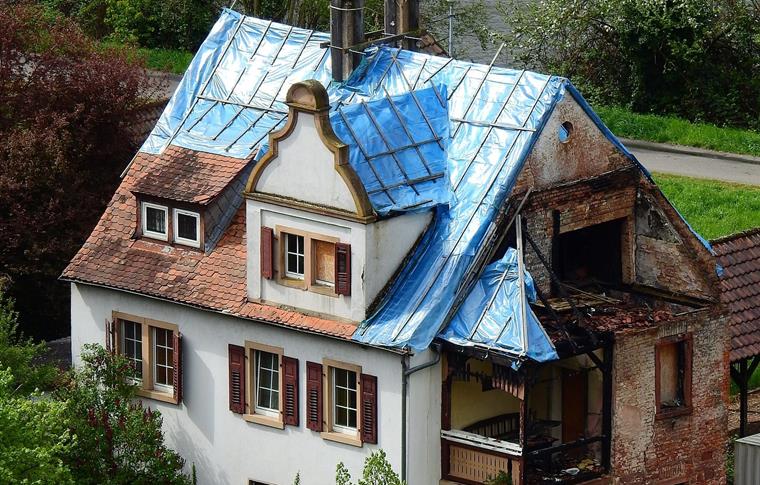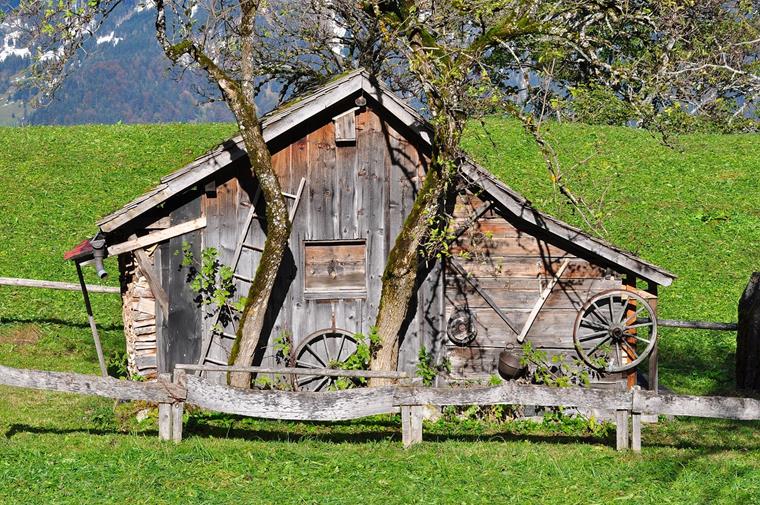From Allgäu to the USA and Back
Sebastian lives in the Allgäu, Germany, and is a trained carpenter. From an early age, timber was the building material of his heart, and that is still the case today. However, his job as a construction site assistant was not enough for him. So his way led him to the office of a software company for timber construction. He then attended the carpenter's master class before he moved to the USA for a few months.
In the Allgäu, he worked as a project manager again, but quickly realized – a change of scene was needed! So he switched back to the construction industry. Here, he discovered his love for modular structures, in which he sees great potential.
- "It's really fun, sustainable, and just cool."
We are excited to see what he can tell us about timber structures and sustainability!
Timber Bathroom
The company where Sebastian works as an operating manager has chosen a special niche for its services: timber modules in the area of wet rooms. Timber and wet? That doesn't sound exactly acceptable at first. Why? In fact, most prefabricated bathrooms are more likely to be made of a steel frame or concrete. The idea was – the same, but sustainable.
Cross-laminated timber instead of concrete: does it work? And how! The secret here is good waterproofing; nothing more is needed. In the end, you don't even notice the difference when you enter such a bathroom.
However, timber as a renewable material is not only a balm for the climate. Since the bathroom is completely prefabricated in a hall, it is only necessary to load the module and bring it to the construction site. There, it is placed, connected to the house network, and done – that saves a lot of time.
Timber Raw Material as Climate Saver?
But what about the CO2 balance? Here, Sebastian has some interesting figures for us. A conventional concrete brick requires around 1.2 tons of CO2 for its production. On the other hand, when wood is felled, it already contains CO2 that the tree has stored for photosynthesis. In a manner of speaking, one takes CO2 from the environment and thus even achieves a positive CO2 balance value in the unprocessed state.
Sebastian emphasizes that suppliers should always have a certificate. This certificate confirms that any wood removed will also be reforested. The cycle of wood felling, planting, letting it grow for 70-80 years, and then cutting it again should definitely be preserved. In this way, you can be sure not to use any illegally felled wood, for example from rainforests.
Exploding Demand and Exploding Prices
It was a big topic in the media: The prices of timber have gone through the roof lately. Sebastian's company was not spared either – on the contrary.
- "Prices have risen by 30-40% overnight."
Of course, this also made it difficult to adhere to contracts that had already been concluded. In the short term, a lot of timber was exported to the USA, which has caused major problems and supply bottlenecks in the German market. At this point, Sebastian appeals to all those who work with timber in the future or at present to really try to source the wood regionally. This is also much more suitable for shorter transport routes and lower transport costs.
All Wood or What?
Sebastian's company builds bathroom modules that are as sustainable as possible, mostly made of timber. We can easily imagine a frame and walls made of timber. But what about the interior work? Can you also work sustainably here?
Our guest explains to us that normal tiles are usually used for the interior design. Most of these are fired, producing a lot of CO2. However, there are already alternatives that are being researched further. Sebastian talks about specially crafted timber that is resistant to moisture, so that it can be installed directly in a shower without any problems. In the end, it is always the customer who decides, and it is also often the price that counts.
- "I personally would prefer everything to be sustainable. Unfortunately, the reality is a bit different."
In order to seal a bath, for example, it is necessary to apply membranes as it is currently not possible to use 100% natural products here.
Attention, Timber! What else is important in modular construction?
The floor plan does not always match the modular structure. This is where the building owners are particularly in demand. As sustainable and fast as building with modules is – sometimes a frame made of timber or a hybrid just makes more sense. The more worthwhile solution has to be considered on a case-by-case basis.
Is a modular structure made of timber more efficient than a conventional structure made of concrete or reinforced concrete, for example? Sebastian explains that it depends on the individual project. In general, he thinks that in terms of prices, modular structures are on a par with the conventional construction methods.
But it's not just about the price of a building. Modular buildings are ready for occupancy much faster. This means that the owner can generate rental income earlier. This also makes the modular design even more attractive from an economic point of view.
Modular Construction as Niche
But why is modular construction used so rarely? Sebastian talks about the fact that this type of construction is simply not yet well-known. It may be talked about a lot, but the experience is often lacking.
- "It then requires a lot of explanation and very clear practical examples."
Sebastian is convinced that more people will opt for modular structures if they are shown exactly how the whole thing works, using practical examples. Visits or workshops would be a good idea, he thinks. Above all, the advantages must be disclosed. We are also sure – modular construction can certainly still inspire many skeptics!
Modular Timber Structures for Redensification of Cities
What is redensification? The aim here is to efficiently expand living space. For this purpose, an additional floor can be added to an existing building, for example. No new foundation is required, which saves a large amount of CO2.
Timber is a perfectly suitable raw material for this. Why? It's pretty simple: Timber is much lighter than concrete or reinforced concrete. Therefore, there are seldom structural problems – even in older buildings. Moreover, timber as a building material has a positive CO2 balance. So it doesn't get any better!
Such a project was carried out in Frankfurt, for example. Sebastian's company was even involved there. One or two floors were added to an old military building, presumably a barracks. This created another 380 new apartments. Timber modular construction was used here, so that these new residential units were ready for occupancy within 12 to 14 months.
Using conventional construction, for example, made of concrete, so many apartments would not have been possible. The construction time would also have been much longer. Impressive!
Future of Construction
Here, Sebastian addresses the previous single-family house culture. He assumes that not everyone will have their own little house on a piece of land in the future. The building landscapes with single-family houses will then presumably give way to multi-family houses.
Another important point is the already mentioned term "redensification" in big cities. There is still a lot of untapped potential here.
He also thinks the renovation of existing buildings is another path that the construction industry will likely take in the near future. He sees energy as a major issue here. More existing buildings have to be energetically renovated in order to be further used sustainably without any problems.
Breaking out of old patterns and developing in new, innovative and digital directions – that would be Sebastian's wish for the future of the construction industry.
- "We talk about sustainability, we make everything digital. And when it comes to approval, we have to print everything out again. We definitely have to do something here."
So the construction industry still has some catching up to do in order to become as sustainable and digital as we would like it to be.
Sebastian, what is your favorite building?
Of course, we also ask Sebastian our final question. He does not have a special favorite structure. However, he is particularly impressed by the sight of old mountain huts. They were built under adverse conditions, without a crane, chainsaw, or proper transport routes.
- "That's where my heart absolutely goes out to me personally as a master carpenter."
We can absolutely understand that. Such old buildings are always impressive. Thank you for being with us!
